Community articles — Reports
Write up experiments and research with LaTeX templates for project and lab reports—including layout guidelines to help guide you through the writing process.
Recent
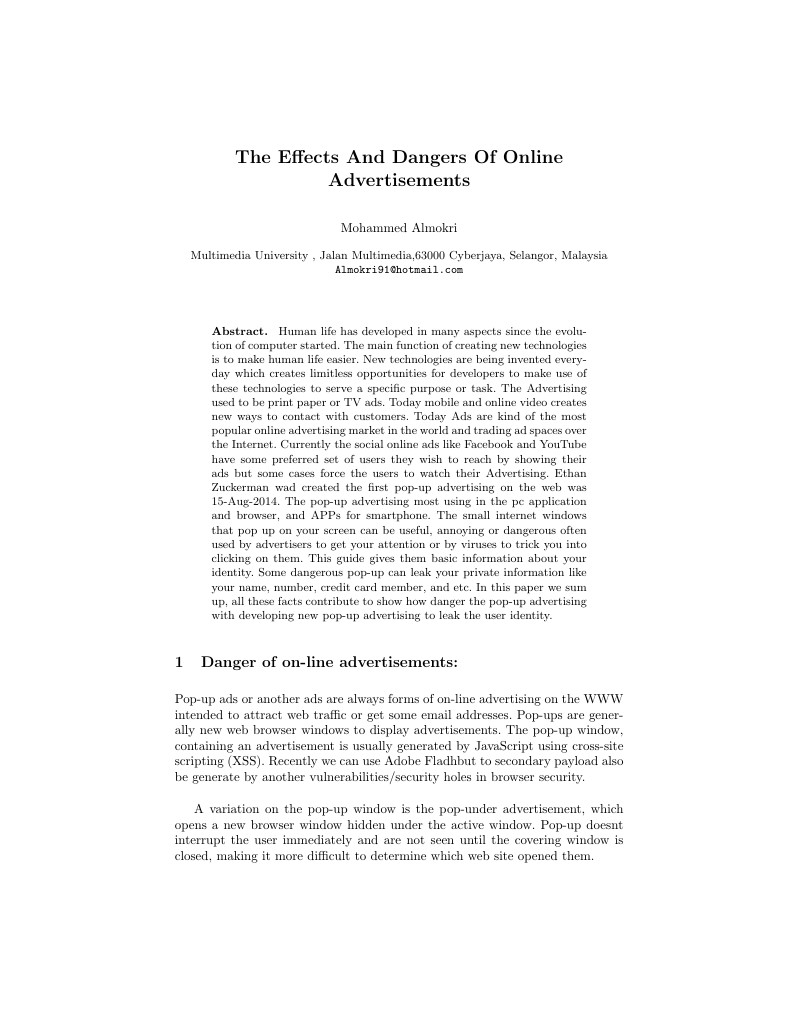
Human life has developed in many aspects since the evolution of computer started. The main function of creating new technologies is to make human life easier. New technologies are being invented everyday which creates limitless opportunities for developers to make use of these technologies to serve a specific purpose or task. The Advertising used to be print paper or TV ads. Today mobile and online video creates new ways to contact with customers. Today Ads are kind of the most popular online advertising market in the world and trading ad spaces over the Internet. Currently the social online ads like Facebook and YouTube have some preferred set of users they wish to reach by showing their ads but some cases force the users to watch their Advertising. Ethan Zuckerman wad created the first pop-up advertising on the web was 15-Aug-2014. The pop-up advertising most using in the pc application and browser, and APPs for smartphone. The small internet windows that pop up on your screen can be useful, annoying or dangerous often used by advertisers to get your attention or by viruses to trick you into clicking on them. This guide gives them basic information about your identity. Some dangerous pop-up can leak your private information like your name, number, credit card member, and etc. In this paper we sum up, all these facts contribute to show how danger the pop-up advertising with developing new pop-up advertising to leak the user identity.
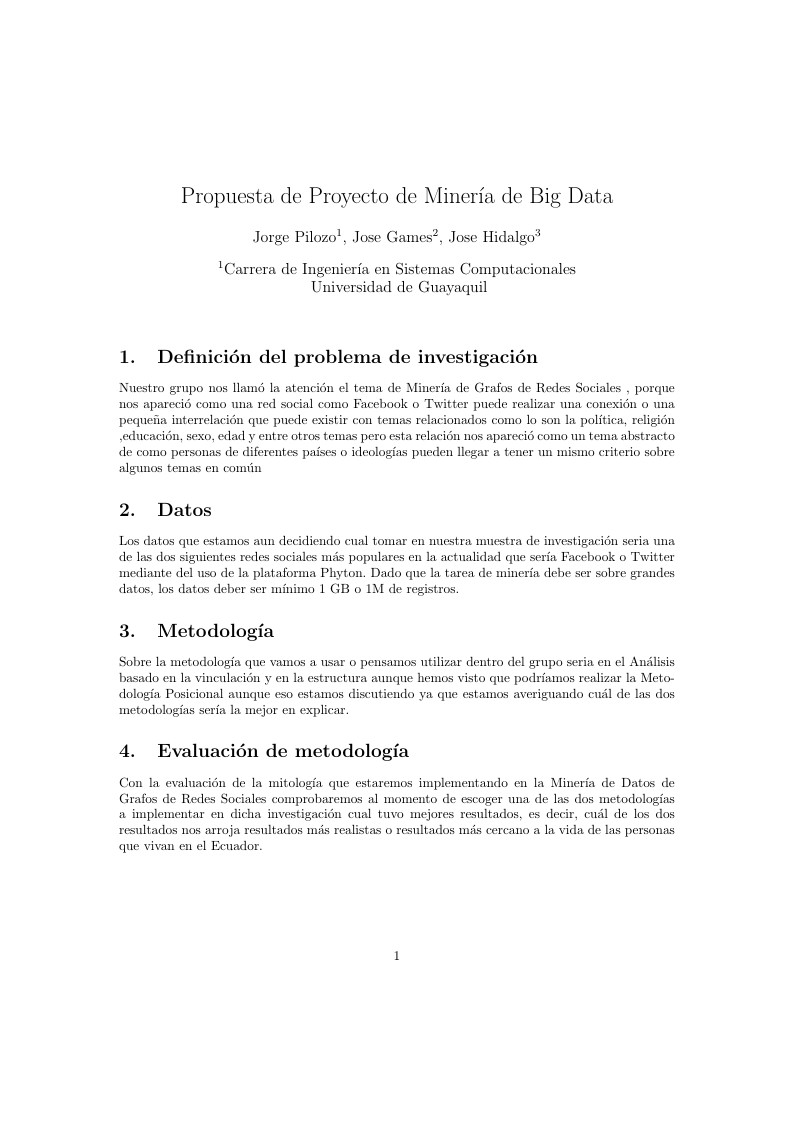
https://www.overleaf.com/3981477ddsxjk
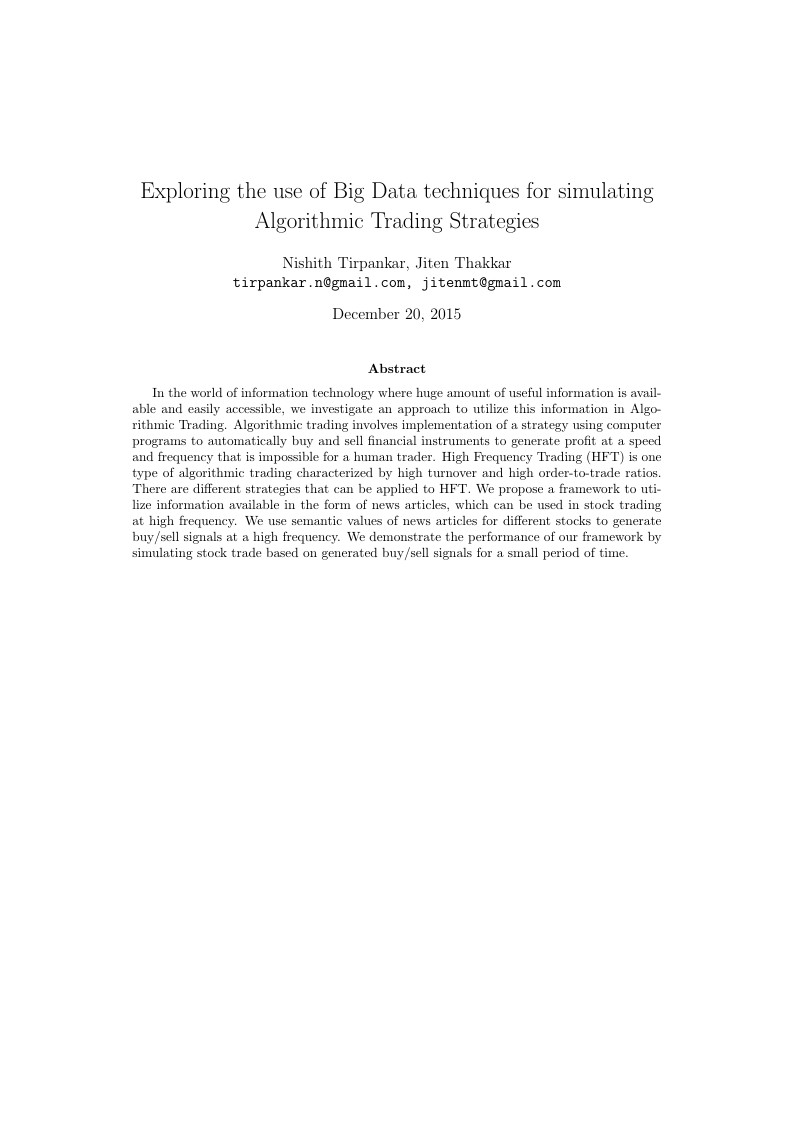
In the world of information technology where huge amount of useful information is available and easily accessible, we investigate an approach to utilize this information in Algorithmic Trading. Algorithmic trading involves implementation of a strategy using computer programs to automatically buy and sell financial instruments to generate profit at a speed and frequency that is impossible for a human trader. High Frequency Trading (HFT) is one type of algorithmic trading characterized by high turnover and high order-to-trade ratios. There are different strategies that can be applied to HFT. We propose a framework to utilize information available in the form of news articles, which can be used in stock trading at high frequency. We use semantic values of news articles for different stocks to generate buy/sell signals at a high frequency. We demonstrate the performance of our framework by simulating stock trade based on generated buy/sell signals for a small period of time.
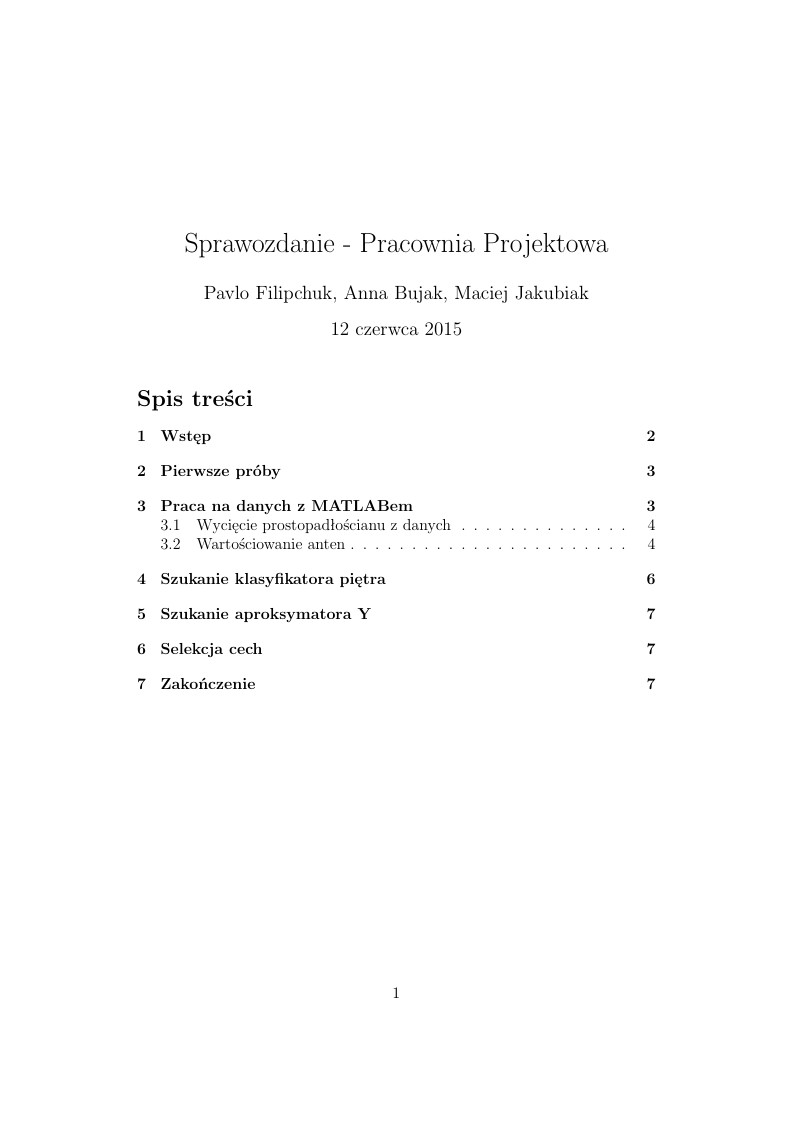
Mieliśmy do rozwiązania problem, który polegał na tym, że po otrzymaniu sygnału z anten sieci komórkowej musieliśmy zlokalizować dany telefon w budynku wydziału MiNI. Do określenia były współrzędne x, y oraz piętro w budynku. Projekt ten wykonywaliśmy w ośmioosobowej grupie. Co tydzień spotykaliśmy się na zajęciach, gdzie omawialiśmy postępy w zadaniu i stawialiśmy sobie nowe cele, zadania, a także rozpatrywaliśmy potencjalne problemy. Stworzyliśmy także grupę dyskusyjną, gdzie omawialiśmy rezultaty działań i zawieraliśmy istotne spostrzeżenia nt. projektu. Powstała również wspólna przestrzeń dyskowa, gdzie udostępnialiśmy sobie nawzajem różne dane, skrypty, wyniki, informacje, dokumenty, poradniki, wykresy i statystyki.

My documentation report Objective: Explain what I did and how, so someone can continue with the investigation Important note: Chapter heading images should have a 2:1 width:height ratio, e.g. 920px width and 460px height. Note: This was produced using the Legrand Orange Book template, available here. Original author of the Legrand Orange Book template: Mathias Legrand (legrand.mathias@gmail.com) with modifications by: Vel (vel@latextemplates.com) Original License: CC BY-NC-SA 3.0
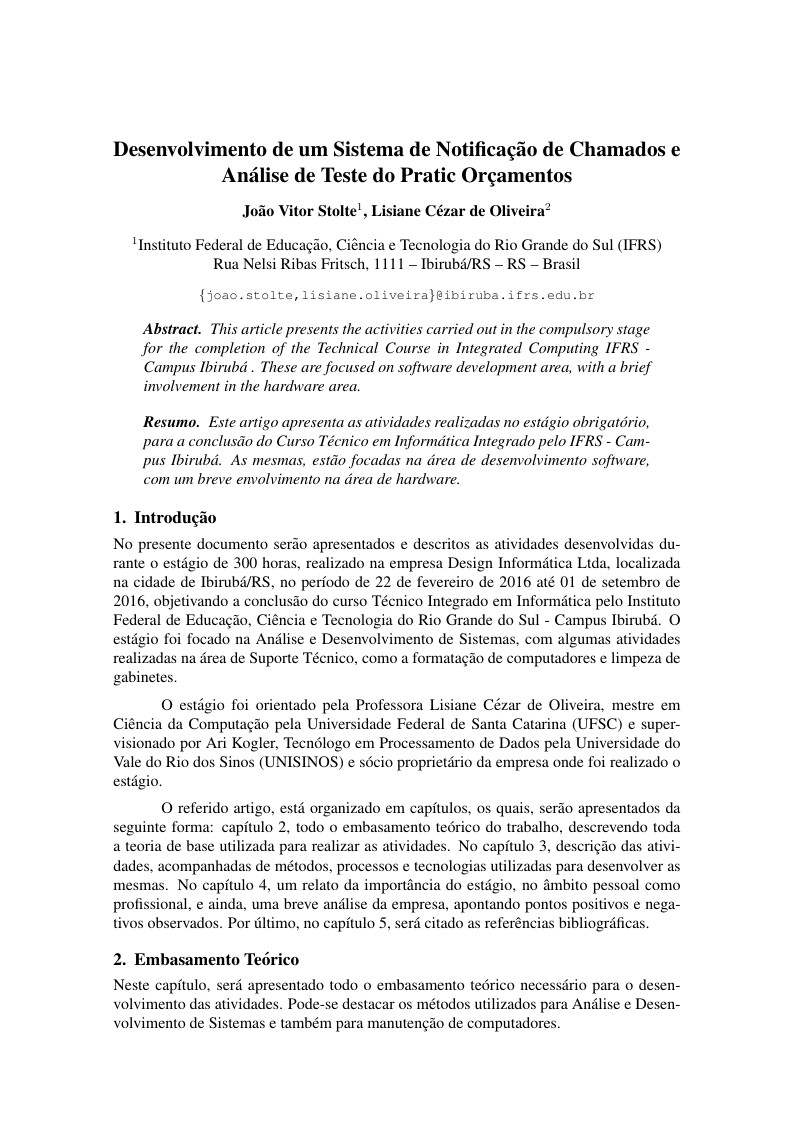
This article presents the activities carried out in the compulsory stage for the completion of the Technical Course in Integrated Computing IFRS - Campus Ibirubá . These are focused on software development area, with a brief involvement in the hardware area.
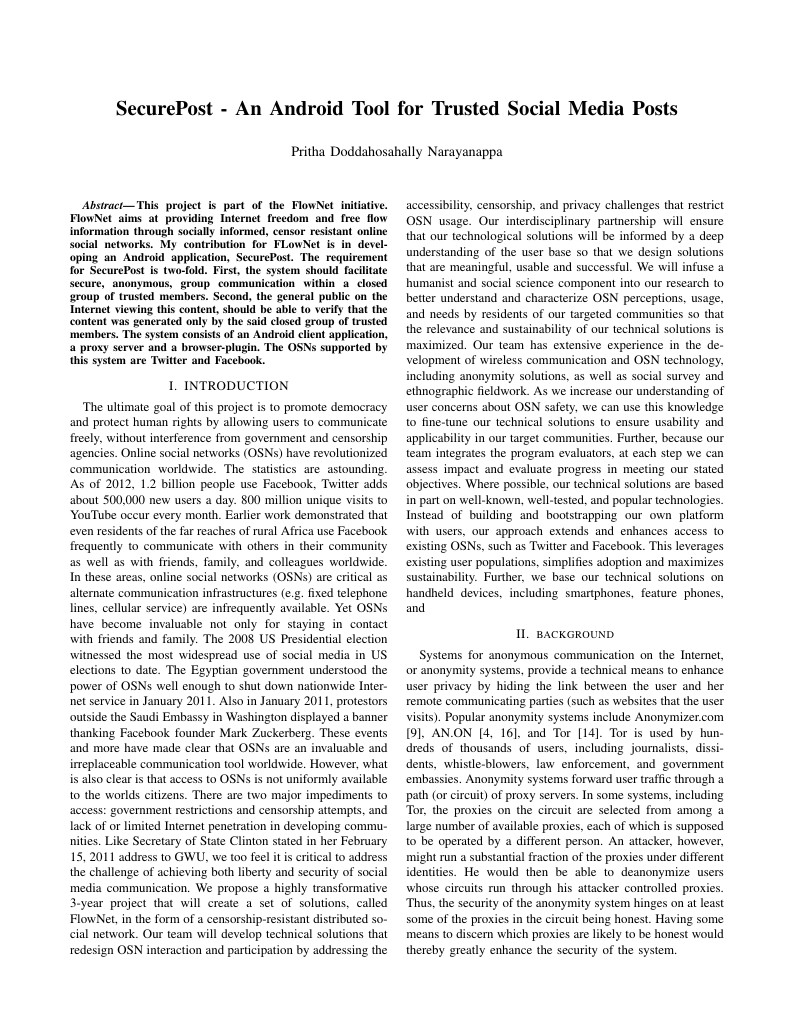
his project is part of the FlowNet initiative. FlowNet aims at providing Internet freedom and free flow information through socially informed, censor resistant online social networks. My contribution for FLowNet is in devel- oping an Android application, SecurePost. The requirement for SecurePost is two-fold. First, the system should facilitate secure, anonymous, group communication within a closed group of trusted members. Second, the general public on the Internet viewing this content, should be able to verify that the content was generated only by the said closed group of trusted members. The system consists of an Android client application, a proxy server and a browser-plugin. The OSNs supported by this system are Twitter and Facebook.

Trabalho Sistemas Distribuidos
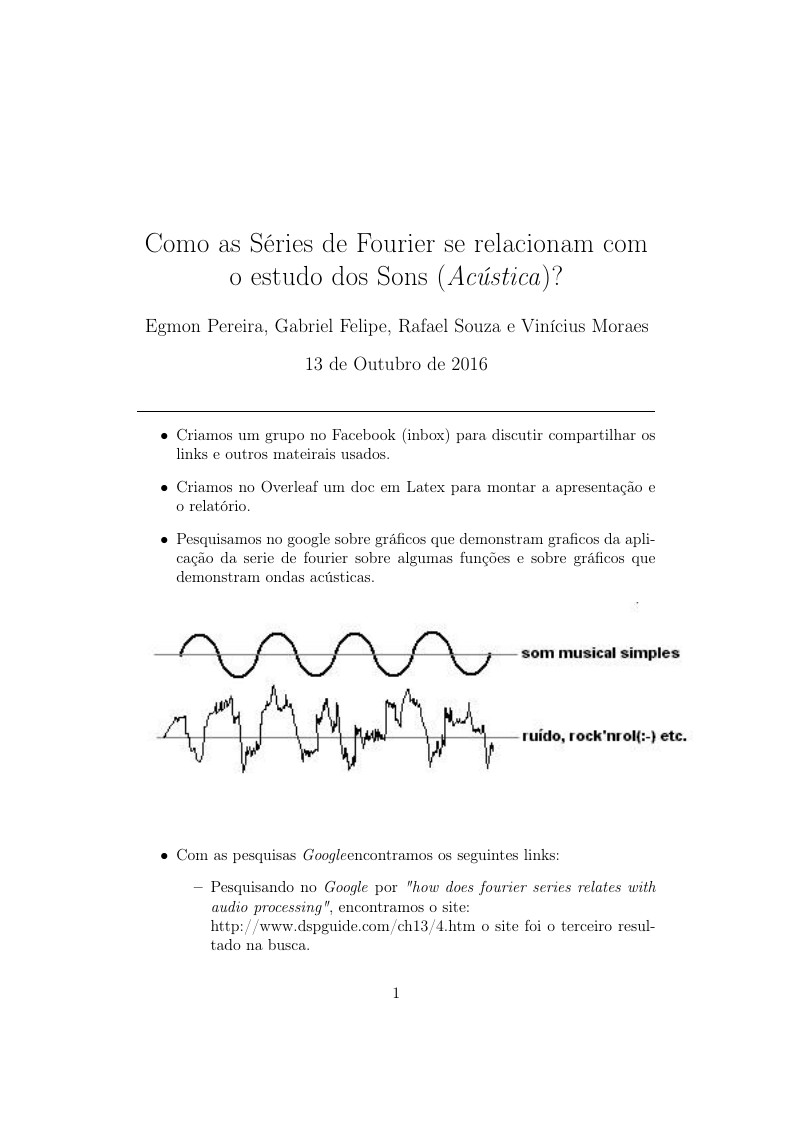
Trabalho de Cálculo 4 - CEFET/MG
\begin
Discover why over 20 million people worldwide trust Overleaf with their work.